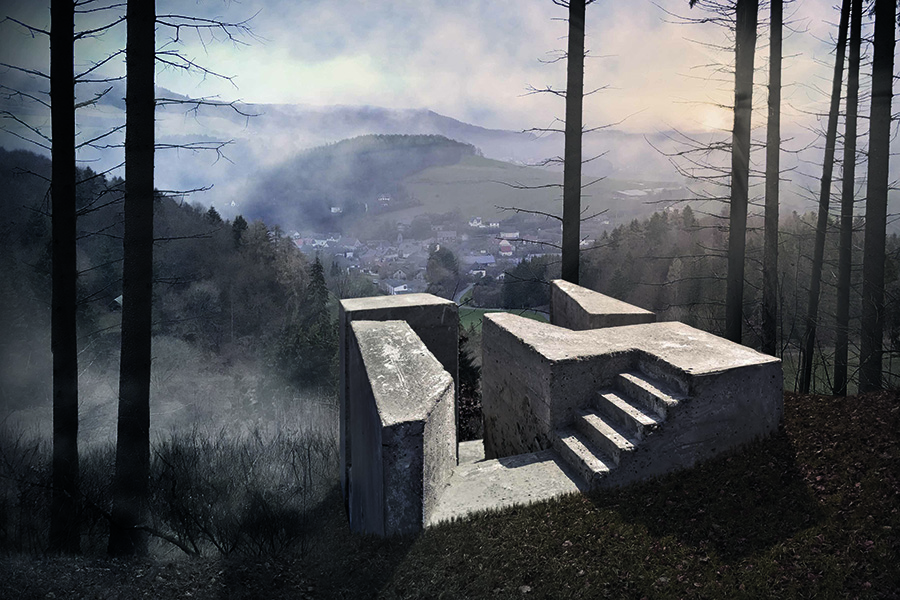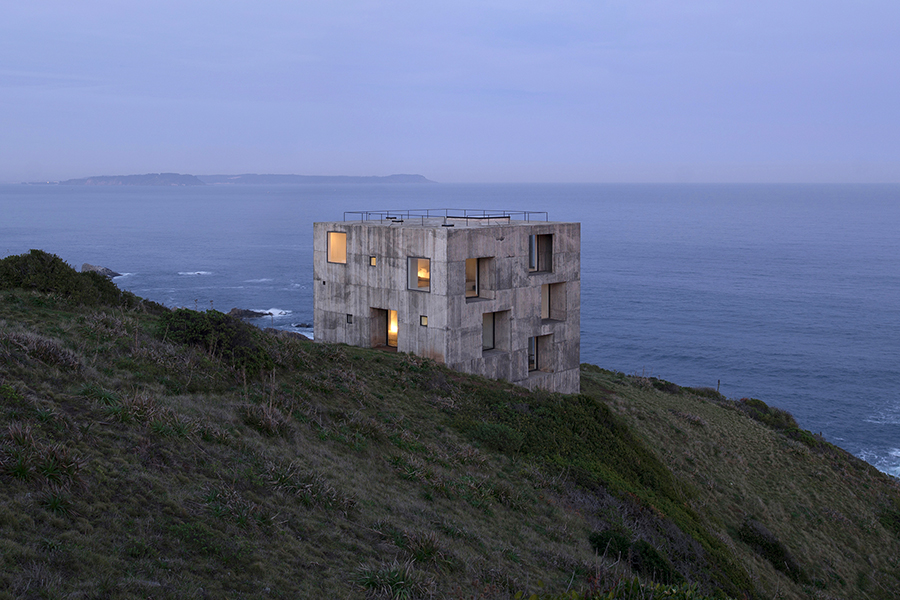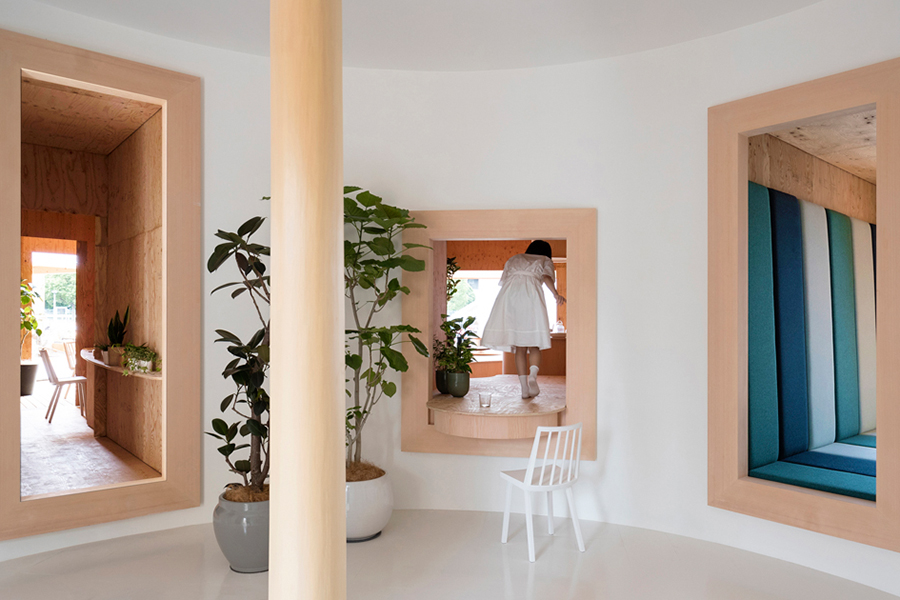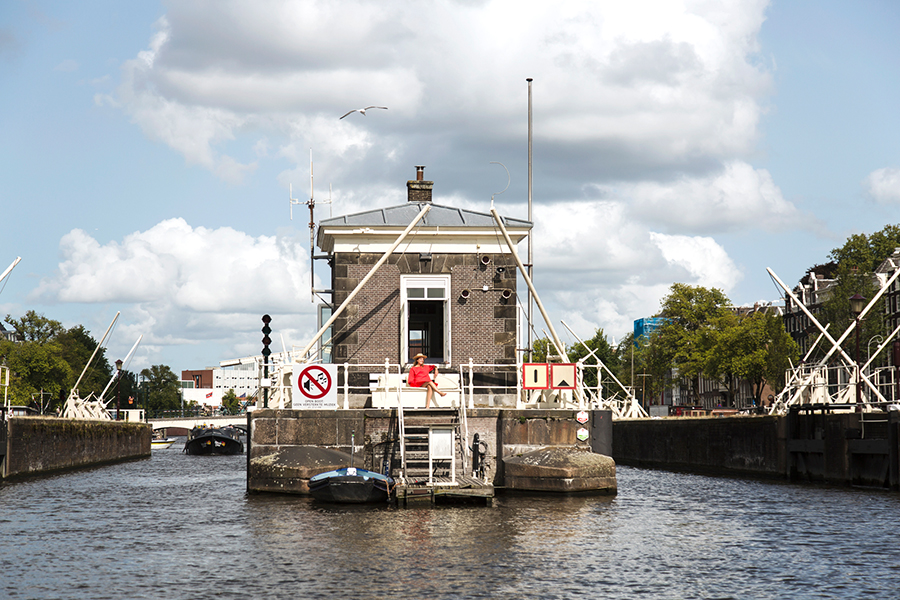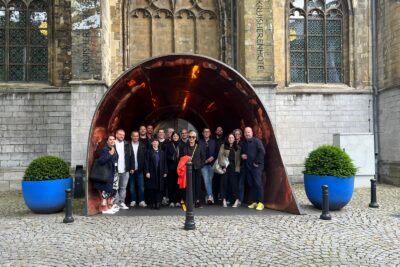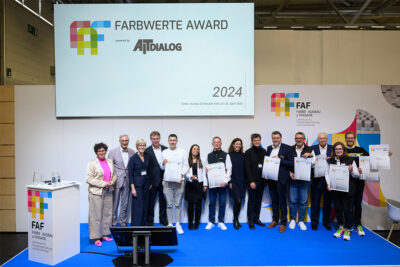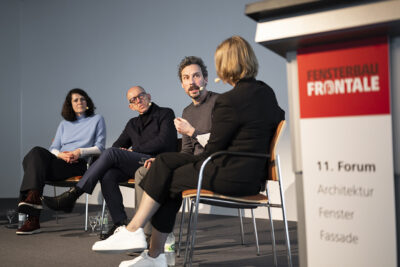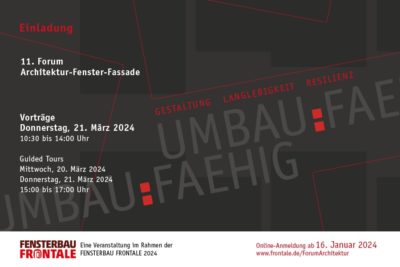Eine Frage an… Interior.Architecture.Hospitality by Heimtextil
Als Ausblick auf das hochkarätige Vortragsforum im Rahmen der Messe Heimtextil in Frankfurt, die vom 7. bis zum 10. Januar 2020 wieder ihre Türen öffnet, geben Architekturbüros wie Jun Igarashi Architects, Christoph Hesse Architekten, Schmidt Hammer Lassen, FREAKS architects sowie Sabine Scharrer, die Leiterin Heimtextil der Messe Frankfurt, bereits im Vorfeld ihre Einschätzungen zum Thema VIELFALT/DIVERSITY, das als Leitthema die Richtung der Vorträge und Diskussionen bestimmt.
Der Beitrag ist in Deutsch und Englisch.
Die Interior.Architecture.Hospitality LECTURES stehen während der Heimtextil 2020 unter dem übergeordneten Thema VIELFALT/DIVERSITY. Was bedeutet Vielfalt für Sie?
Jun Igarashi (Jun Igarashi Architects, Hokkaido)
For me, “diversity” is “ambiguity”. Humans are neither robots nor livestock. Natural animals live freely in a global environment full of diversity. Architecture prescribes human activities in a way. That is physically inevitable. However, we believe that adding “ambiguity” to the specified architectural space will create a space that can accept “diversity”.
Christoph Hesse (Christoph Hesse Architekten, Korbach)
„Vielfalt ist aufgrund der dezentralen Strukturen tief in der Kulturgeschichte unseres Landes verankert. Sie hatte und hat jedoch nur dann einen immanenten Wert, wenn durch kommunikativen Austausch die Wünsche und Sehnsüchte jedes Einzelnen in die Gestaltungsprozesse aufgenommen werden.“
Marthijn Pool (Space&Matter, Amsterdam)
Diversity is very important to us, because in our profession we see it as our design objective to bring people together in pleasant places. We create the context and conditions for people to be attracted to each other and exchange ideas and cultures. In order to establish a rich cultural and social dynamics it is important to have a high level of diversity. The more different people are the more interesting the conversations and exchange will get. We always aim to include people from a variety of backgrounds into our projects, new networks will be created, new realities are emerging and culture can reinvent itself. That’s important to us. We try to enrich our projects by incorporating the social tissue in our built environment. As architects this is our add value in realizing a place, that is more valuable than the mere design of a space.
Yves Pasquet, Cyrill Gauthier, Guillaume Aubry (FREAKS freearchitects, Paris)
In the reality of today, „diversity“ should feel like an old-fashioned word. But it’s unfortunately not at all. Female architects still have to fight to promote their work, black architects still have to fight to promote their work, architects from „exotic countries“ (central/south America, Africa, south Asia…) still have to fight to promote their work. We – white occidental male architects – have the responsibility to always keep that fact in mind to be sure that we never professionally prejudice them even without doing it intentionally.
Sabine Scharrer (Leiterin Heimtextil, Messe Frankfurt)
Vielfalt ist für mich auch ein Ausdruck von Individualität. Mit Textilien haben wir unbegrenzte Möglichkeiten, die Facetten der eigenen Identität darzustellen oder zu spiegeln. So vielfältig Identität aussehen kann, so unbegrenzt sind die Farbvielfalt, die Textur, das Design und die Anwendbarkeit von Textilien.
Und was bedeutet großer Facettenreichtum, Farbigkeit und eine Fülle an Möglichkeiten für die Textilindustrie und wie spiegelt sich das in den Textilien wider?
Sabine Scharrer
Es ist vor allem die Flexibilität, die vielfältigen Einsatzmöglichkeiten von Textilien, die sie so faszinierend machen. Textilien bieten für fast alle Lebensbereiche passende Lösungen. Ganz gleich, ob in der Polstermöbelherstellung, in der Innenraumgestaltung, bei der Verschattung oder beim Schlafkomfort. Textilien berühren unsere Sinne. Zugleich sind sie in der Lage, funktionale Eigenschaften zu erfüllen wie kaum ein anderes Material, von Schall- bis Brandschutz. Es gibt sie in allen erdenklichen Optiken, Haptiken und Stilarten. Es ist ganz klar die Vielfalt, die Textilien so unverwechselbar macht und ihnen auch in Zukunft noch zahllose weitere Einsatzbereiche eröffnen wird.
Der erste Vortragstag steht unter dem Thema „VIELFALT: Bibliotheken als Orte für Wissen und Gemeinschaft“. Die Entwicklung von Kultur und der Medienlandschaft im digitalen Zeitalter sorgen dafür, dass sich die Bibliotheken neu erfinden müssen – konzeptionell, strategisch und auch architektonisch. Was bedeutet ein Bibliotheksbesuch für Sie persönlich?
Elif Tinaztepe (Schmidt Hammer Lassen, Aarhus)
My first strong memory of library is as a young teenager. Even though I spent most of my time in the library doing homework with classmates back then, the thing I really enjoyed was sitting alone, surrounded by books at this one single desk placed in front of a corner window, with views over the city, the forest and the sea. I felt remember feeling anything was possible: the books, the thoughts, and the views. All these years later, a lot is the same, but no doubt enhanced by being an architect. And libraries are taking on much more than what they did 30 years ago. For many, the library is a reliable lifelong companion. A place that offers free access to experiences as well as knowledge without asking for anything in return. A place to experiment, take risks, gain new skills, learn by doing. A place to connect around interests at a time when societies are getting most divided. The public space where everyone is equal and equally valued, with room for everyone. A place for healing, debating, understanding, connecting. Somewhere to be alone, together, or alone together. A place that invites surprises and delights with its architecture.
Was macht aus Ihrer Sicht eine Bibliothek zu mehr als einem Ort des Wissens, sondern zu einem Treffpunkt, einem Ort zum Verweilen?
The library has a beating heart and the design of the spaces must support that rhythm – give it room to beat, faster, slower. Students stand in queues before opening to be able to sit at their preferred places – whether it’s a place for collaboration, ideation or contemplation. They move furniture around to create that perfect environment for themselves, then settle.
Then childcare institutions and schools arrive and take over the makerspaces. It’s not unusual to see 5 year-olds learning about Picasso through trying out their own self-portraits. New arrivals find a helping hand while filling out sensitive applications in a place they can feel safe, welcome and part of the society. Retired professionals join in to read the paper over a cup of coffee or engage in deep research. There are knitting clubs, film clubs, lectures and music. Then there are the books of course, browsing to find that one book or because you don’t quite know what it is yet. People pop in, people linger. Some come to watch others, some the views. The energy level in the library rises and falls with light.
Passend zum Thema Bibliotheken wird es auf der kommenden Heimtextil zum ersten Mal die Interior.Architecture.Hospitality LIBRARY geben. Es handelt sich hierbei um eine textile Bibliothek, die eine Auswahl an Ausstellerprodukten mit funktionalen Eigenschaften, wie schwer entflammbar, schalldämmend, scheuerbeständig, wasserabweisend und Allergiker geeignet zeigt. Sehen Sie in der neuen textilen Bibliothek die Chance Innenarchitekten, Architekten und Hospitality Experten miteinander zu vernetzen und den Wissensaustausch zu fördern?
Sabine Scharrer
Ja, und mehr als das. Denn gerade durch die eben angesprochenen vielfältigen Einsatzmöglichkeiten von Textilien ist es unerlässlich, Anwender aus unterschiedlichen Bereichen miteinander ins Gespräch zu bringen. Vor allem aber geht es uns darum, anschaulich darzustellen, was Textilien alles leisten können und zu zeigen, dass funktionale Textilien mit ihrer Textur und ihrem Design überraschen können. Wasserabweisend ist nicht gleichbedeutend mit abwischbar, schwer entflammbar bedeutet nicht zwingend grob und schwer. Für Innenarchitekten und Architekten wird es in der Library verblüffende Erkenntnisse und inspirierende Eindrücke geben.
Am zweiten Vortragstag steht das Thema „VIELFALT: Urbane Lebensorte im Wandel“ im Fokus.
Die Art des Wohnens hat sich in den letzten Jahren gewandelt. Das Wohnen ist so vielfältig wie die Menschen selbst. Wohin werden sich die Wohnformen in Zukunft entwickeln?
Christoph Hesse
„Die Wohnformen der Zukunft werden identitätsstiftend, solidarisch und energetisch autark sein. Architektur, Mensch und Natur haben sich in den letzten zwanzig Jahren mehr denn je voneinander entkoppelt. Immer mehr Menschen wurden zu passiven Konsumenten und sehen sich immer weniger in der Lage, aktiv an der Gestaltung ihres Lebensraums mitwirken zu können. Der heute überwiegend von Investoren gesteuerte Wohnungsbau, bei dem die einzelne Wohnung lediglich als spekulatives Konsumgut betrachtet wird, wird in Zukunft durch Formen der partizipativen Gestaltung ersetzt werden. Die Menschen werden zu Produzenten und erobern sich dadurch die Verbindung zwischen der gebauten, natürlichen und sozialen Umwelt zurück. Die Entwicklung der Wohnformen der Zukunft sollte daher zum Ziel haben: aus Entkopplung wird Vernetzung und aus Vernetzung wird Verbundenheit.“
Jun Igarashi
I believe that the future of life will become lighter and easier with the development of technology. Life load is reduced and convenience is improved. Energy and heating / cooling loads will also be reduced. On the other hand, the universal part of humanity will not change.
Minimalismus im Wohnen spielt in Japan eine große Rolle. Welche Möglichkeiten bieten hier Textilien, beispielsweise als Raumtrenner oder in integrierten Ruhe- und Kommunikationsräumen?
There is a door called shoji in Japan. It is a door with Japanese paper. Light diffuses softly. When you look at the light, you can imagine an eternal space on the other side. I have created this kind of shoji-like state with textiles. This is an operation to imagine an eternal space. It is also a material that can control air softly.
„VIELFALT: Raum auf Zeit für Wohnen und Gemeinschaft“ heißt es am dritten Vortragstag, an dem unterschiedliche Formen des temporären und kostengünstigen Wohnens auf Zeit im Fokus stehen: Angefangen bei Budgethotels, über private Wohnungen via Plattformen wie Couchsurfing und Airbnb bis hin zu Mikro- und Serviced Appartements. Welche neuen Ansätze sind hierbei zukunftsweisend?
Hrólfur Karl Cela (Basalt Architects, Reykjavik)
With Diversity as a que, the development of temporary accommodation is bound to have many different threads. To the Privileged, it means something entirely different than what it means to the Underprivileged. For everyone however, it means meeting needs and desires; safety, shelter, sense of belonging, sense of community, opportunity to influence. It may reinforce sense of identity, challenge identity. Provide opportunities to experience something different and learn, to experience the uniqueness of place, uniqueness of culture. To enhance humanity, battle isolation, balance imbalances, connect to nature. And we can only hope that this be done in harmony with the environment, and respect for the rights of future generations.
Marthijn Pool
We see the development of hospitality concepts and housing concepts diversify more and more. On the one hand some Hotel concepts apeal very strongly to being ‘home’ in a remote city and in another culture. […] On the contrairy, it’s the visitor as an explorer who wants to behave like a local and wants to blend in. […] This local experience is being catered for by AirBnB concepts but also by smaller bed&breakfast concepts. At the same time we see that there’s the emergence of boutique hotels that have a small collection of unique rooms, p.e. a cabin in the woods, a unique pavilion to sleep in or an architectural gem. […] These are the unique and personal experiences that people like. It’s is one of a kind, personal and local.
Further we see that the housing concepts are shifting towards hospitality concepts. Some co-housing projects and short stay appartment are actually hotels. […] The amenities are the same. […] Because people move around the globe more flexibly or change their jobs more often, they enjoy these nomadic spaces are global hubs to meet people, interact and also have the sense of a local and personal experience.
Die nächste Architektengeneration sprüht vor Motivation und Tatendrang, sie ergreift die Initiative, sucht nach neuen und alternativen Möglichkeiten. Sie suchen Inspiration im Ungewöhnlichen, ebenso wie im Bekannten. Doch was genau zeichnen die Architektur und die Räume der jungen Architekten und Innenarchitekten aus? Was sind, aus Ihrer Sicht, die Materialien der Zukunft, insbesondere in Bezug auf Textilien?
FREAKS architects
This is not a statement but rather an observation : we have the feeling that young architects do nowadays put a lot of efforts in designing as much as they can the interior details as a tentative to escape the furniture mass standardization of the last decades that has actually started after WW2 and ends up today with a scary worldwide Ikea-zation of all interior spaces. In that way those young architects link back to the early 20th century when architecture was considered as a total design, from engineering to craft, from the building structure to the design of the pattern of the curtain fabric. Talking about textile, it also feels like it is one of the main material used to answer contemporary issues such as temporary space splitting (what could be done with curtains, screens, sliding walls etc.). Textiles offer what the materials of tomorrow are asked for: flexible in their use, sustainable, easy to change / replace, and therefore adaptive to all trends.
Sofia von Ellrichshausen (PEZO VON ELLRICHSHAUSEN, Concepcion)
The most sustainable architecture is the one unbuilt, someone said. In our own practice, we don’t speculate with new materials but with the oldest possible one. In our experience, materials and construction in general, is rather relative to the specific context in which the building is located. In places where there is a tradition of wood construction it makes no sense, and it would even be more expensive, to build with stone or concrete.
We made a house entirely out of wood on a beautiful island in the south of Chile (Rode House, Chiloe Island, 2018), within a cultural landscape that is embedded with the traditional methods for wooden churches and fisher boat construction. […] And yet, we were not motivated by any nostalgia, by a romantic intention of going back in time. Our project is rather abstract, with a self-sufficient spatial structure that is then articulated with the material culture that is at hand. […]
If that is a path to follow in the future, I do not know. I want to believe that we, as both artists and architects, may project a certain ethic of action into the future. For us it is more important to know why to make a building, why a room has to be tall or large, why a texture needs to be soft or rough, why every little detail affects our experience of the world. The technics for that to happen, or the “how”, is a drama with many more actors, a problem that exceeds the very author of a work.
- Jun Igarashi, Marthijn Pool, Freaks architects, Sabine Scharrer, Elif Tinaztepe, Christoph Hesse, Hrólfur Karl Cela, Sofia von Elrichshausen
- Entwurf “Seelenort” von Christoph Hesse Architekten
- Basalt Architects: Gudlaug Akranesi
- schmidt hammer lassen architects: Universität Aberdeen
- “Viking” von FREAKS Architects. Foto: Jules Couartou
- Pezo von Ellrichshausen: POLI
- “House Vision” von Jun Igarashi Architects
- Sweets Hotel Room 206 in Amsterdam von Space&Matter. Foto: Mirjam Bleeker
- Sweets Hotel Buiksloterdraaibrug von Space&Matter







